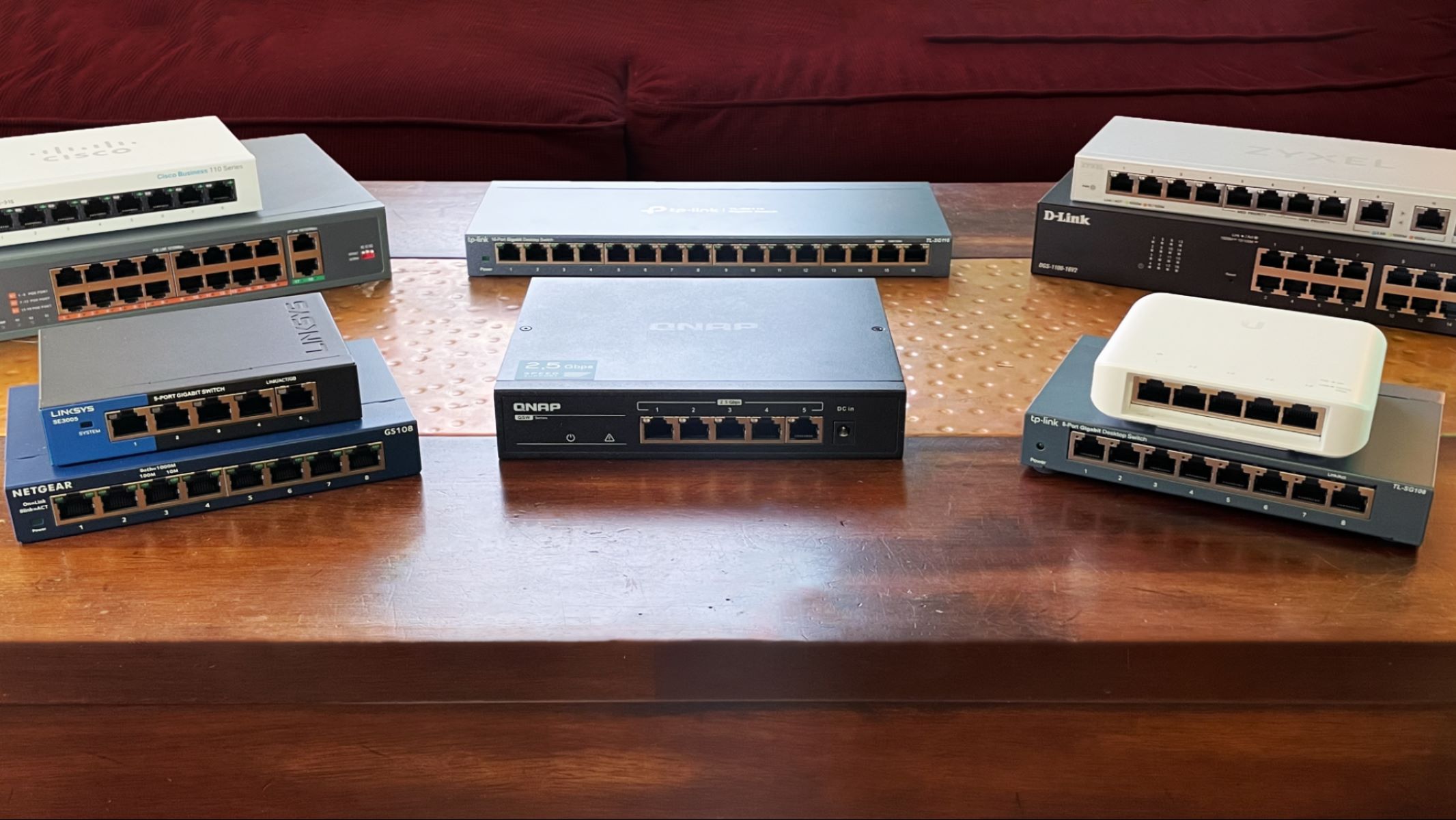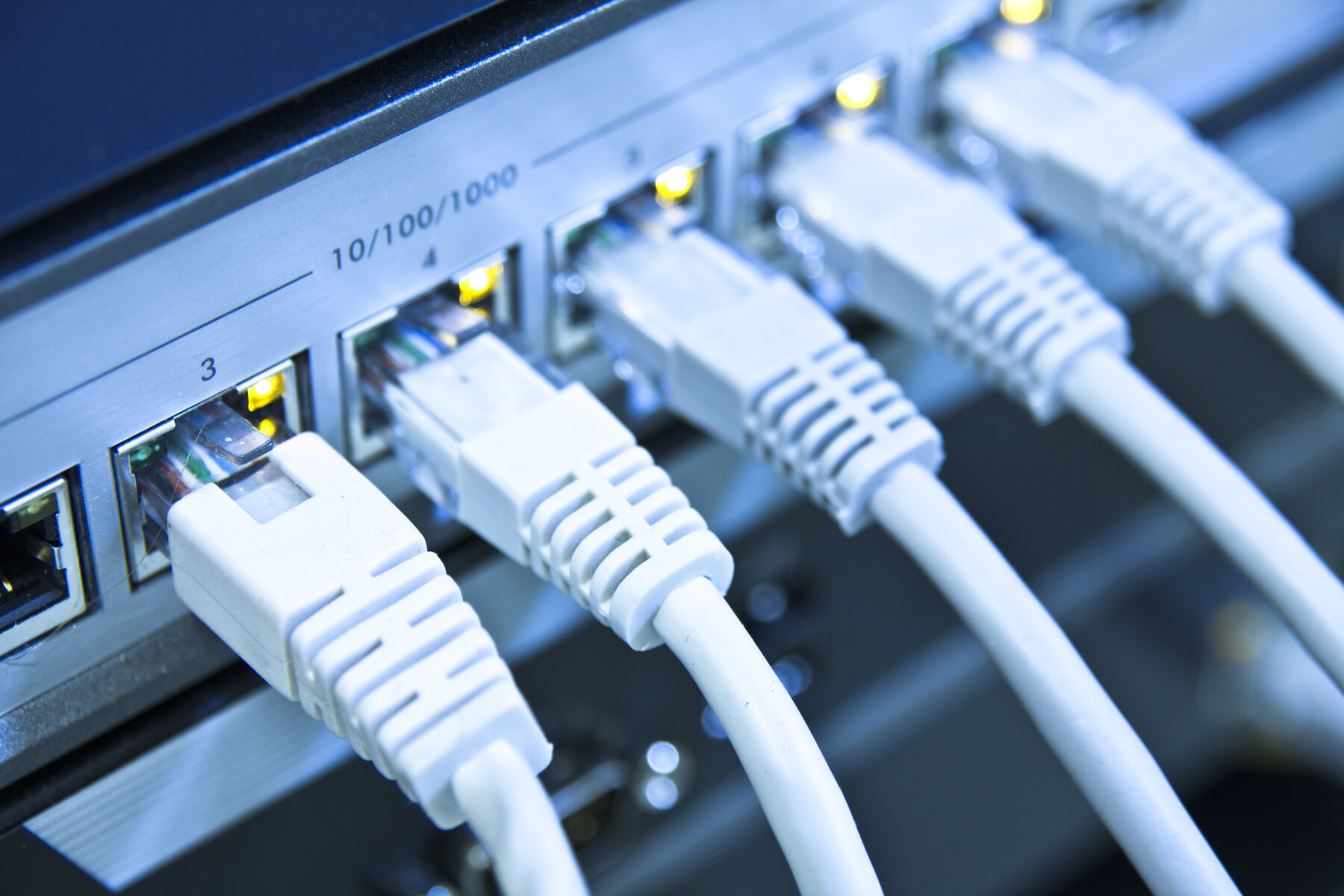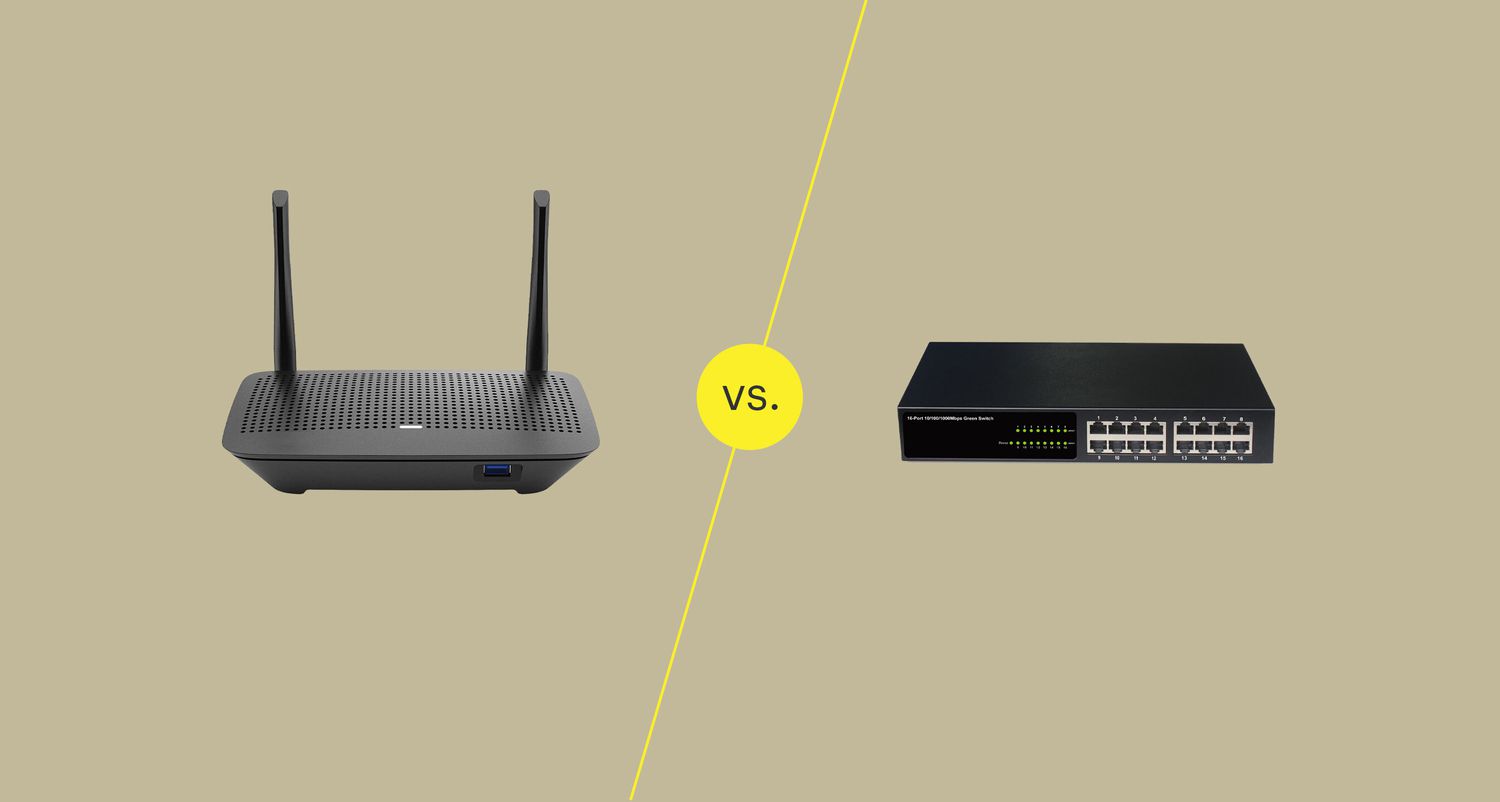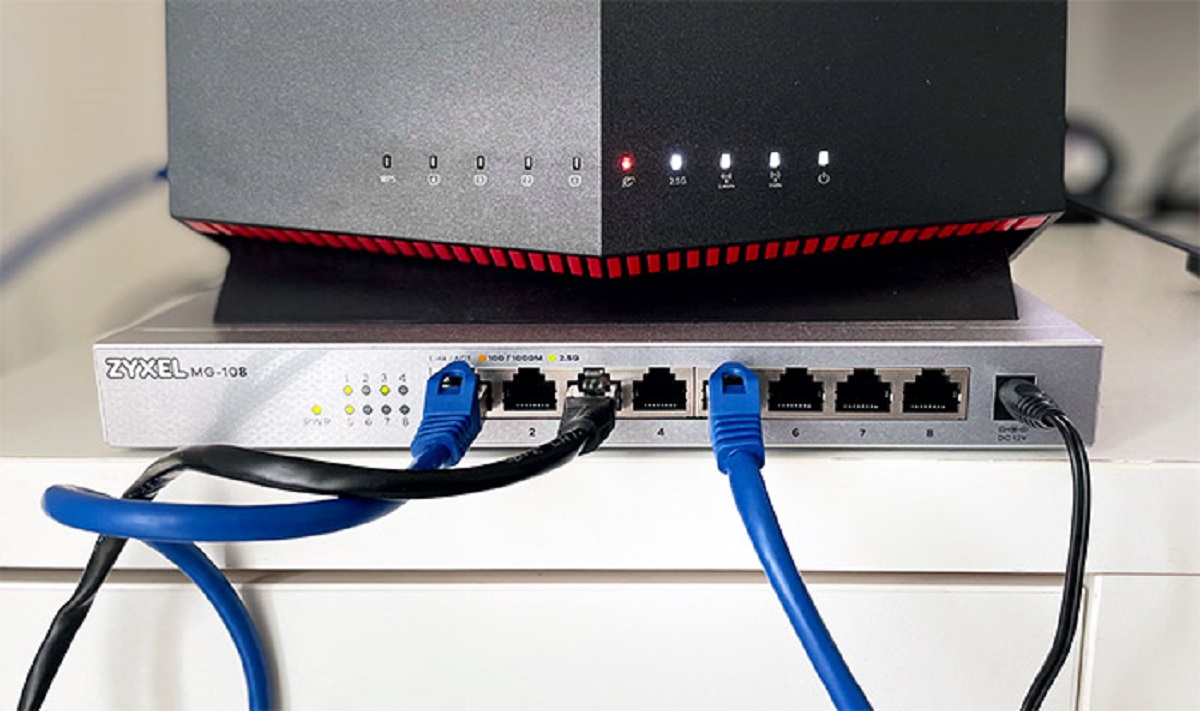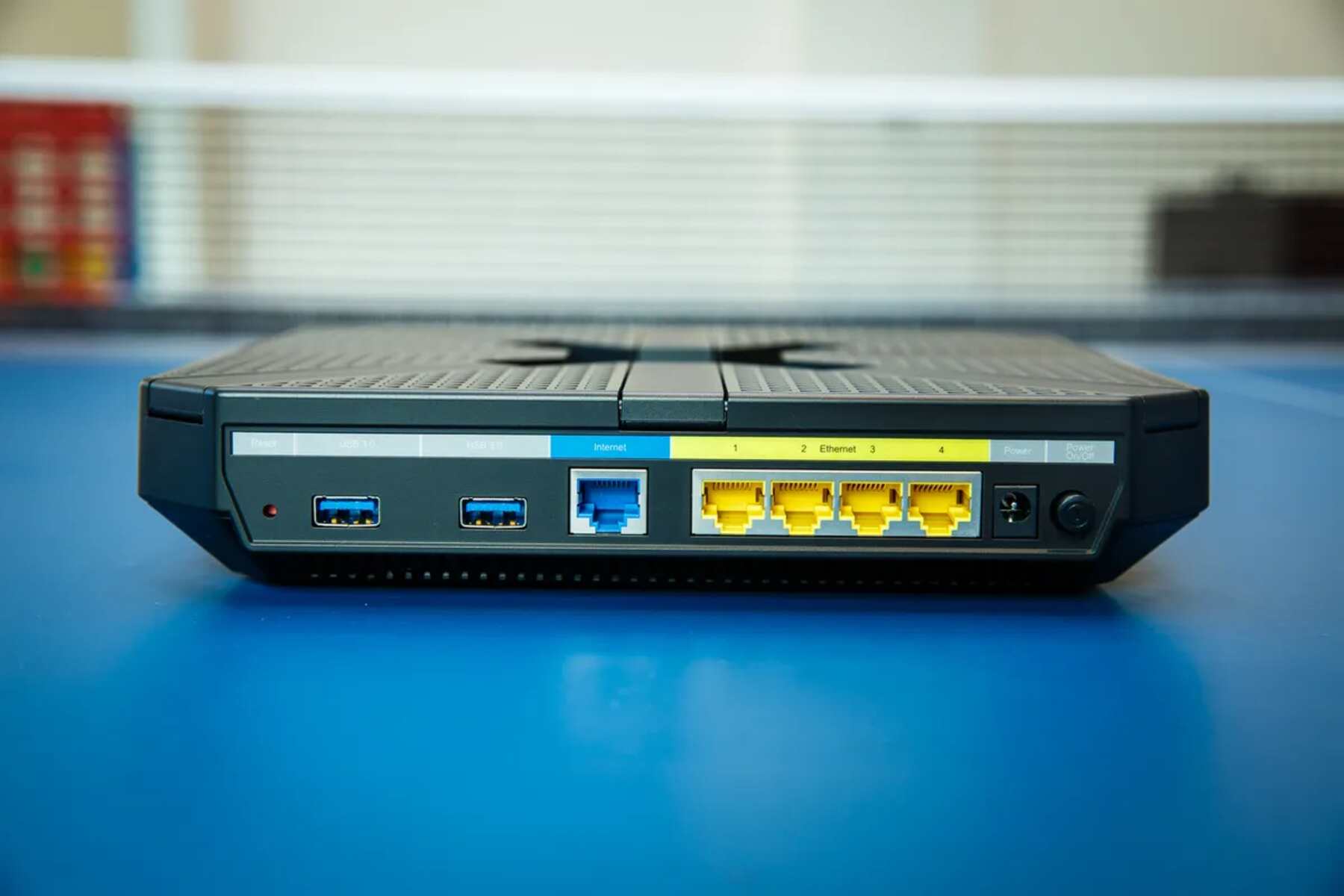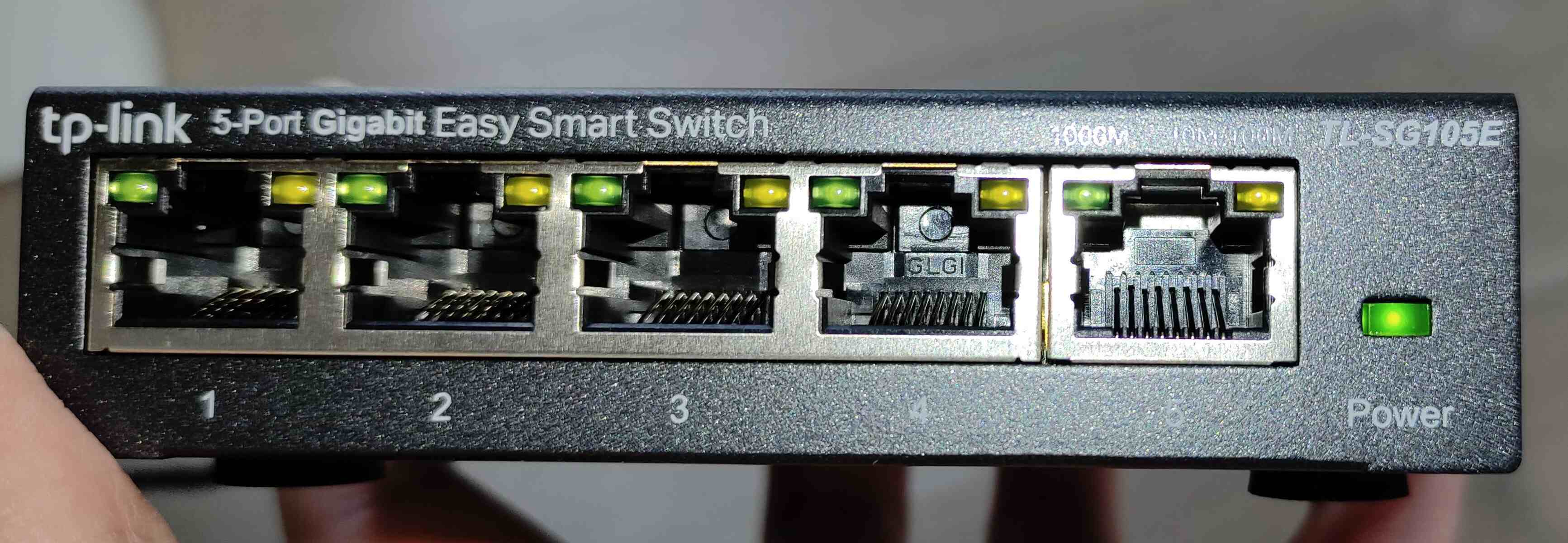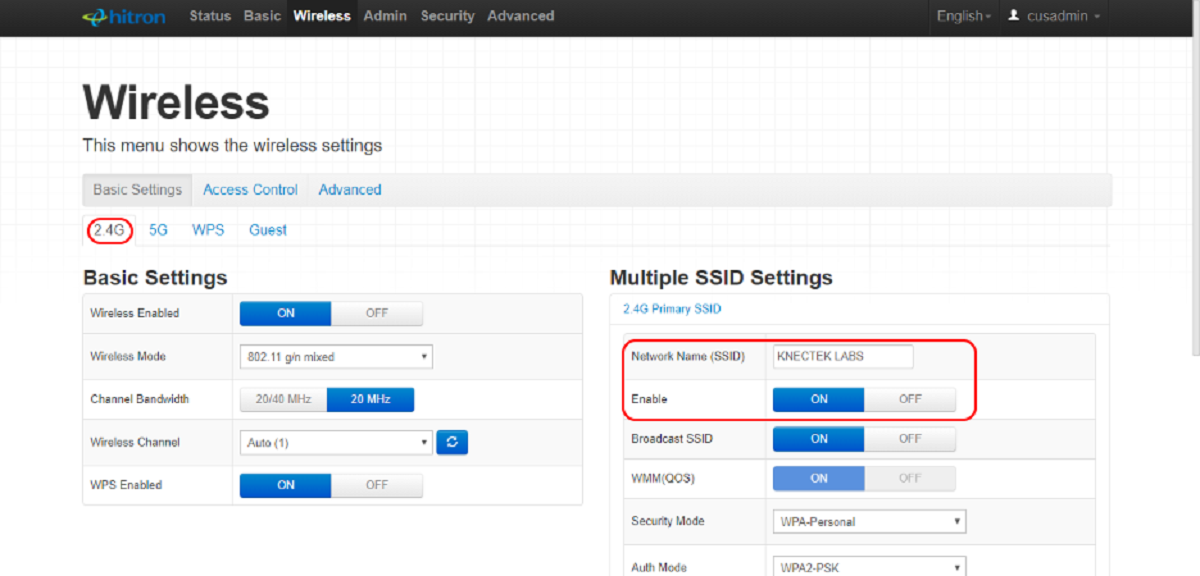What are Switches and Routers in Networking?
Switches and routers are two essential components in computer networking that play crucial roles in connecting devices and enabling efficient communication between them.
A switch is a networking device that operates at the data-link layer of the OSI model. Its main function is to connect multiple devices within a local area network (LAN) and facilitate the exchange of data packets between them. Switches use MAC addresses to forward data to the appropriate destination device, allowing for efficient and reliable communication.
On the other hand, a router is a device that operates at the network layer of the OSI model. It is responsible for connecting multiple networks together, such as LANs and wide area networks (WANs). Routers use IP addresses to direct data packets across networks, ensuring that information reaches its intended destination.
Switches and routers are often used together in networking setups to establish reliable and efficient communication. Switches create local networks within a LAN, while routers connect these LANs to form larger networks.
Switches are ideal for environments where devices need to communicate within a local network. They provide high-speed and dedicated connections between devices, making them perfect for applications that require low latency and high bandwidth, such as online gaming or media streaming.
Routers, on the other hand, are designed to handle communication between different networks. They determine the best path for data packets to travel across networks, ensuring efficient delivery and seamless connectivity. Routers are commonly used in homes and businesses to connect to the internet and establish connections between the local network and external networks.
In summary, switches and routers are fundamental components in computer networking. While switches enable communication within a local network, routers facilitate communication between different networks. By working together, switches and routers ensure efficient data transfer and ensure that information reaches the intended destination.
Understanding Switches
A switch is a networking device that allows multiple devices to connect and communicate within a local network, such as a home or office LAN. It operates at the data-link layer of the OSI model and uses MAC addresses to forward data packets to the appropriate devices.
Switches are responsible for creating a network infrastructure by providing dedicated and high-speed connections between devices. Unlike hubs, which simply broadcast data to all connected devices, switches intelligently direct data packets only to the device they are intended for. This creates a more efficient and secure network.
When a data packet arrives at a switch, it examines the destination MAC address and uses its MAC address table to determine the correct port to send the packet to. The switch then forwards the packet directly to the destination device, without impacting other devices on the network.
Switches are ideal for environments where multiple devices need to communicate with each other within a local network. They provide increased bandwidth and reduced network congestion by creating separate collision domains for each port. This means that devices connected to a switch can transmit and receive data simultaneously without interference from other devices.
Managed switches offer additional features and functionalities compared to unmanaged switches. They allow network administrators to have more control over the network, such as configuring VLANs (Virtual Local Area Networks), defining Quality of Service (QoS) policies, and monitoring network traffic. Managed switches are typically used in larger networks where more advanced network management is required.
In summary, switches are vital networking devices that enable efficient communication within a local network. They provide dedicated and high-speed connections, direct data packets to the intended recipients using MAC addresses, and help to reduce network congestion. Switches are an essential component of any computer network, whether it’s a small home network or a large enterprise network.
The Basics of Routers
Routers are essential networking devices that connect multiple networks together, such as local area networks (LANs) and wide area networks (WANs). They operate at the network layer of the OSI model and use IP addresses to forward data packets across networks.
One of the primary functions of a router is to determine the best path for data packets to travel from the source device to the destination device. This process is known as routing. Routers maintain a routing table that contains information about different networks and the optimal paths to reach them.
When a data packet arrives at a router, it examines the destination IP address and consults its routing table to determine the next hop for the packet. The router then forwards the packet to the appropriate network or another router that can bring it closer to the destination. This process continues until the packet reaches its final destination.
Routers provide several advantages over switches. Firstly, they allow for the creation of larger networks by connecting multiple LANs, enabling communication between devices in different locations. Secondly, routers provide network security through features like Network Address Translation (NAT) and firewall functionality, which help protect the network from unauthorized access.
Another important aspect of routers is their ability to handle dynamic routing protocols. These protocols allow routers to exchange information and automatically update their routing tables as network conditions change. This ensures that data packets are always routed through the most efficient paths, enhancing network performance.
There are various types of routers available, including home routers, enterprise-grade routers, and core routers. Home routers are typically used in residential settings, providing internet connectivity and enabling communication between devices within the home network. Enterprise routers are used in large organizations or businesses to connect multiple networks and provide advanced security features. Core routers, on the other hand, are high-end routers used by internet service providers (ISPs) to handle massive amounts of traffic and route data between different networks on the internet.
In summary, routers are critical networking devices that connect multiple networks together. They determine the best paths for data packets to travel across networks, enhance network security, and support dynamic routing protocols. Routers play a crucial role in allowing devices in different locations to communicate with each other effectively.
Switches vs. Routers: Key Differences
Switches and routers are both important components of computer networking, but they serve different purposes and have distinct functionalities. Understanding the key differences between switches and routers is crucial for designing and managing a network effectively.
1. Function: Switches primarily operate at the data-link layer of the OSI model and are responsible for connecting devices within a local network. They enable communication between devices by forwarding data packets within the network based on MAC addresses. On the other hand, routers operate at the network layer and connect multiple networks together, enabling communication between devices in different networks using IP addresses.
2. Routing: One of the main functions of routers is to determine the best path for data packets to travel across networks. They maintain routing tables and use routing protocols to ensure that data packets are sent to the appropriate destination. Switches, on the other hand, do not perform routing. They focus on forwarding data packets within a network based on MAC addresses.
3. Network Size: Switches are typically used within a local network, such as a home or office LAN. They create dedicated connections between devices within the same network, providing high-speed and efficient communication. Routers, on the other hand, are used to connect multiple networks together. They are suitable for larger networks and can handle the routing of data packets between different networks.
4. Broadcast Domains and Collision Domains: Switches create separate collision domains for each connected device, which means that devices can transmit and receive data simultaneously without interfering with each other. This improves network performance and reduces collisions. Routers, on the other hand, create separate broadcast domains, which help to manage and control network traffic and prevent broadcast storm issues.
5. Network Security: Routers provide advanced security features, such as firewall functionality and Network Address Translation (NAT). These features help protect the network from unauthorized access and ensure secure communication between networks. Switches, on the other hand, do not have built-in security features and primarily focus on facilitating communication within a network.
6. Network Management: Managed switches offer more advanced network management capabilities compared to routers. They allow for the configuration of VLANs, QoS policies, and monitoring of network traffic. Routers also offer some management features, but managed switches provide greater control over the local network.
In summary, switches and routers have distinct roles and functionalities in computer networking. Switches focus on connecting devices within a local network, facilitating communication based on MAC addresses. Routers, on the other hand, connect multiple networks together, enabling communication between devices in different networks using IP addresses. Understanding these key differences is essential for designing and managing efficient and secure computer networks.
When to Use a Switch and When to Use a Router
Choosing between a switch and a router depends on the specific networking requirements and the size of the network being set up. Understanding the appropriate use cases for each device is essential for designing an efficient and scalable network.
Use a Switch:
A switch is typically used in situations where multiple devices need to communicate within a local network. Here are some scenarios when a switch is the preferred choice:
- Local Area Networks (LANs): Switches are ideal for creating LANs, whether it’s a small home network or a large office network. They provide dedicated and high-speed connections between devices within the same network, enabling efficient communication.
- Device-to-Device Communication: If the primary requirement is to facilitate direct communication between devices within the network, a switch is the appropriate choice. Switches establish separate collision domains for each connected device, reducing network congestion and improving performance.
- Applications with Low Latency and High Bandwidth: Switches are suitable for applications that require low latency and high bandwidth, such as online gaming, media streaming, or data-intensive applications. They provide dedicated connections, minimizing delay in data transmission.
Use a Router:
Routers are typically used when there is a need to connect multiple networks together or establish communication between devices in different networks. Here are some scenarios when a router is the preferred choice:
- Wide Area Networks (WANs): Routers are essential for connecting LANs in different locations, such as branch offices or remote sites. They enable communication between devices in different networks, facilitating seamless connectivity.
- Internet Connectivity: When establishing a connection to the internet, a router is necessary to manage the data flow between the local network and external networks. Routers provide security features like firewall functionality and Network Address Translation (NAT) to protect the network from unauthorized access.
- Routing Data between Networks: If there is a need to route data packets between multiple networks, a router is required. Routers maintain routing tables and utilize routing protocols to determine the best path for data packets to travel, ensuring efficient delivery.
It’s important to note that in many network setups, switches and routers are used together. Switches are used within local networks to facilitate communication between devices, while routers connect the local network to external networks or other LANs, enabling connectivity on a broader scale.
In summary, switches are appropriate for creating local networks and facilitating device-to-device communication within the same network. Routers, on the other hand, are used to connect multiple networks together, establish internet connectivity, and route data packets between networks. Understanding the specific requirements of the network is crucial for determining whether a switch or a router (or both) is needed.
Types of Switches
Switches come in various types that cater to different networking needs and scalability requirements. Understanding the different types of switches can help in selecting the most suitable switch for a particular network setup. Here are some common types of switches:
1. Unmanaged Switches:
Unmanaged switches are basic switches that do not have any configuration options. They are typically plug-and-play devices that require minimal setup. Unmanaged switches are suitable for small networks or home setups where simplicity is prioritized over advanced features. They provide straightforward and cost-effective network connectivity.
2. Managed Switches:
Managed switches offer advanced configuration options and network management capabilities. These switches provide greater control over the network, allowing for the configuration of VLANs, Quality of Service (QoS) policies, and the monitoring of network traffic. Managed switches are commonly used in medium to large-sized networks or in environments that require more fine-grained control over network operations.
3. Layer 2 Switches:
Layer 2 switches operate at the data-link layer of the OSI model and can forward data packets based on MAC addresses. They are proficient in creating LANs and facilitating communication between devices within the same network. Layer 2 switches are efficient in managing network traffic and providing improved network performance.
4. Layer 3 Switches:
Layer 3 switches combine the functionality of both switches and routers. They can route data packets between different networks using IP addresses, similar to routers. Layer 3 switches are useful when there is a need to perform inter-VLAN routing or handle communication between multiple networks without the need for a separate router. They offer enhanced performance and efficiency compared to traditional routers.
5. PoE Switches:
Power over Ethernet (PoE) switches can supply power to PoE-enabled devices such as IP phones, cameras, and wireless access points through the Ethernet cables. These switches eliminate the need for separate power adapters for connected devices, simplifying the installation and reducing cable clutter. PoE switches are commonly used in offices, public spaces, and surveillance systems.
6. Modular Switches:
Modular switches allow for the customization and expansion of the switch’s capabilities by adding or removing modules. These modules can include various ports, interface types, or additional functionalities. Modular switches offer flexibility and scalability, making them suitable for large-scale networks that require future-proofing and the ability to adapt to evolving networking needs.
When selecting a switch, it is essential to consider factors such as the size of the network, required features, scalability, and budget. The choice of switch type will depend on the specific networking requirements and the level of control and management needed within the network infrastructure.
Types of Routers
Routers come in various types, each designed to fulfill specific networking requirements and accommodate different scales of network connectivity. Understanding the various types of routers can help in selecting the most suitable router for a particular network setup. Here are some common types of routers:
1. Home Routers:
Home routers, also known as residential gateways, are designed for use in households or small offices. These routers provide internet connectivity to multiple devices within a local network and often include built-in switches, wireless capabilities, and firewall functionalities. Home routers typically have a user-friendly interface and offer simplified setup options to cater to non-technical users.
2. Small Business Routers:
Small business routers are intended for use in small businesses or offices that require more advanced features and connectivity options compared to home routers. They often offer additional security features such as Virtual Private Network (VPN) support, intrusion detection, and content filtering. Small business routers are scalable and can accommodate the growth of the network as the business expands.
3. Enterprise Routers:
Enterprise-grade routers are built to handle the networking needs of large organizations or businesses. These routers offer advanced features, high performance, and scalability to support complex networks that require extensive routing capabilities. Enterprise routers often include redundant power supplies, multiple WAN interfaces, and support for advanced routing protocols.
4. Core Routers:
Core routers are high-end routers used by Internet Service Providers (ISPs) or large network providers to handle massive amounts of traffic at the core of the network. These routers are designed for high performance, scalability, and fault tolerance. Core routers are responsible for routing data between different networks and play a critical role in ensuring the smooth flow of internet traffic.
5. Virtual Routers:
Virtual routers, also known as software routers, are routers that exist as virtual machines (VMs) or software instances within a virtualized environment. They offer the same functionalities as physical routers but can be easily provisioned and managed as virtual resources. Virtual routers are commonly used in cloud environments, data centers, and Software-Defined Networking (SDN) implementations.
6. Wireless Routers:
Wireless routers enable wireless connectivity by integrating a wireless access point with router capabilities. These routers allow devices to connect to the local network and access the internet wirelessly. Wireless routers are commonly used in homes, offices, and public spaces where wireless connectivity is essential.
When selecting a router, it’s crucial to consider factors such as the size of the network, required features, scalability, and network traffic requirements. The choice of router type will depend on the specific networking needs and the capacity to handle the intended workload and connectivity demands.
How Switches and Routers Work Together
Switches and routers are both integral components of a network infrastructure, and they often work in conjunction to ensure efficient and secure communication between devices and networks. Understanding how switches and routers work together is essential for designing and managing a robust network.
Local Network Communication:
Switches play a crucial role in facilitating communication within a local network. They create dedicated connections between devices within the same network, allowing for efficient data transfer. When a device wants to communicate with another device on the same network, the switch uses MAC addresses to direct data packets directly to the intended recipient, ensuring optimal performance.
Routing Data between Networks:
Routers, on the other hand, handle communication between different networks. They are responsible for determining the best path for data packets to travel across networks and ensuring that data reaches its intended destination. Routers use IP addresses to route data packets and maintain routing tables that contain information about different networks and their connectivity.
Connecting Local Network to External Networks:
Switches and routers work together to establish connectivity between a local network and external networks, such as the internet. Switches connect devices within the local network, while routers serve as the gateway between the local network and external networks. Routers provide security features, like firewall functionality and Network Address Translation (NAT), to protect the local network from unauthorized access from external networks.
Breaking Down Network Traffic:
Switches and routers help optimize network traffic by breaking it down into segments. Switches create separate collision domains by providing dedicated connections to devices within a local network, reducing the chances of data collisions. Routers, on the other hand, create separate broadcast domains, controlling the broadcast traffic and preventing broadcast storms that can impact network performance.
Scalability and Expansion:
Scales. As a network expands, additional switches can be added to accommodate more devices within the local network. Routers handle the routing of data across multiple networks, allowing for the expansion of the network to connect to new locations and accommodate more users.
By working together, switches and routers ensure efficient and secure communication between devices and networks. Switches provide fast and reliable connections within a local network, while routers handle the routing of data between networks, connecting multiple networks together. The collaboration between switches and routers allows for the creation of complex and scalable network infrastructure.
Advantages and Disadvantages of Switches and Routers
Switches and routers are integral components of computer networking, each with its own advantages and disadvantages. Understanding these pros and cons can help in designing and managing an efficient and reliable network infrastructure.
Advantages of Switches:
- Efficient Local Communication: Switches provide fast and dedicated connections within a local network, allowing for efficient communication between devices.
- Low Latency and High Bandwidth: Switches offer low latency and high bandwidth, making them ideal for applications that require real-time data transmission, such as online gaming or media streaming.
- Reduced Network Congestion: By creating separate collision domains for each connected device, switches help reduce network congestion and improve overall network performance.
- Cost-effective Networking: Switches are generally more affordable than routers, making them a cost-effective option for setting up local networks.
Disadvantages of Switches:
- Limited Network Connectivity: Switches are designed for local network communication and cannot connect devices in different networks without the use of routers.
- Lack of Advanced Features: Switches typically lack advanced features like routing capabilities, security functionalities, and network management options that routers offer.
- Less Scalability: Switches are limited in terms of scalability and cannot handle the routing of data between networks or accommodate large-scale network expansions.
Advantages of Routers:
- Inter-network Communication: Routers connect multiple networks together, enabling communication between devices in different networks and facilitating internet connectivity.
- Routing Efficiency: Routers determine the best path for data packets to travel across networks, ensuring efficient delivery and optimizing network performance.
- Advanced Security Features: Routers offer security functionalities like firewall capabilities, Network Address Translation (NAT), and Virtual Private Network (VPN) support to protect the network from unauthorized access.
- Scalability and Network Expansion: Routers can accommodate the routing of data between networks, allowing for network expansion and the inclusion of new locations and networks.
- Dynamic Routing Protocols: Routers support dynamic routing protocols that automatically update routing tables and adapt to changes in network conditions, enhancing network efficiency.
Disadvantages of Routers:
- Higher Cost: Routers are generally more expensive than switches, particularly when deploying advanced enterprise-grade routers with extensive features and capabilities.
- Increased Complexity: Routers require more configuration and management compared to switches, which can increase complexity and the need for skilled network administrators.
- Additional Network Setup: To establish connectivity within a local network, routers often require the use of switches or hubs in combination with them, adding an extra layer of network setup.
Choosing between switches and routers depends on specific networking requirements, the scale of the network, and the desired functionalities. Combining switches and routers in a network setup can leverage their respective advantages and disadvantages, creating a well-rounded, efficient, and secure network infrastructure.
Common Networking Terminology to Know
When diving into the world of computer networking, understanding the common terminology used is essential for effectively communicating and managing network infrastructure. Here are some key terms and concepts that are commonly used in networking:
- IP Address: An IP address is a unique numerical label assigned to each device connected to a network. It identifies the device’s location and allows for communication between devices in different networks.
- MAC Address: A MAC (Media Access Control) address is a unique identifier assigned to a network interface card (NIC) in a device. It is a hexadecimal value used at the data-link layer to ensure the proper delivery of data packets within a local network.
- Protocol: A protocol is a set of rules and specifications that govern how data is transmitted, received, and processed across a network. Examples include TCP/IP, HTTP, and SMTP.
- LAN (Local Area Network): A LAN is a network that connects devices within a limited geographic area, such as a home, office, or school. It allows for the sharing of resources and facilitates local communication.
- WAN (Wide Area Network): A WAN is a network that connects devices over a larger geographical area, often spanning multiple locations or cities. The internet itself is an example of a WAN.
- Router: A router is a networking device that connects multiple networks together and directs data packets between these networks based on IP addresses.
- Switch: A switch is a networking device that connects devices within a local network and forwards data packets based on MAC addresses. It enhances communication efficiency by creating dedicated connections.
- Firewall: A firewall is a security system that acts as a barrier between a network and outside threats. It filters incoming and outgoing network traffic based on predefined rules to protect the network from unauthorized access.
- DNS (Domain Name System): DNS is a hierarchical decentralized system that translates domain names (such as www.example.com) into their corresponding IP addresses. It enables users to access websites using memorable domain names instead of numeric IP addresses.
- Packet: A packet is a unit of data that is transmitted over a network. It contains the data being sent, along with headers and metadata used for routing and control purposes.
- Bandwidth: Bandwidth refers to the maximum amount of data that can be transmitted in a given time period over a network connection. It is typically measured in bits per second (bps) or its multiples.
These are just a few of the many terms used in networking. Familiarizing yourself with these terms will help you navigate the world of computer networking and better understand the concepts and technologies involved.
Conclusion
Switches and routers are fundamental components of computer networking that play unique roles in enabling efficient and secure communication. Switches facilitate communication within a local network by creating dedicated connections and forwarding data packets based on MAC addresses. On the other hand, routers connect multiple networks together and route data packets between them using IP addresses.
By working together, switches and routers create a robust network infrastructure. Switches optimize local network communication, reducing network congestion and improving performance. Routers handle the routing of data between networks, ensuring efficient delivery and connecting devices in different networks.
Understanding the advantages and disadvantages of switches and routers helps in selecting the appropriate devices for specific networking needs. Switches offer efficient local communication, low latency, and high bandwidth, making them ideal for small-scale networks and applications that require device-to-device communication. However, they lack advanced routing capabilities and scalability for larger network setups. Routers provide inter-network communication, advanced security features, scalability, and dynamic routing protocols, making them essential for connecting networks and facilitating internet connectivity. However, routers are generally more expensive and require more configuration and management.
To build a comprehensive network infrastructure, it is common to use switches and routers together. Switches create local networks, while routers connect these networks to form a larger network structure. This combination allows for efficient and secure communication between devices within the local network and enables connectivity to external networks and the internet.
Furthermore, being familiar with common networking terminology is essential for effective communication and better management of network infrastructure. Key terminologies such as IP address, MAC address, LAN, WAN, protocol, firewall, and DNS play pivotal roles in understanding and configuring networks.
In conclusion, switches and routers are indispensable components of computer networking. Their collaboration ensures efficient data transfer, seamless connectivity between networks, and effective management of network infrastructure. By understanding their functionalities, advantages, and key terminologies, network administrators can design, deploy, and maintain resilient and robust networks that meet specific requirements and support seamless communication between devices and networks.







